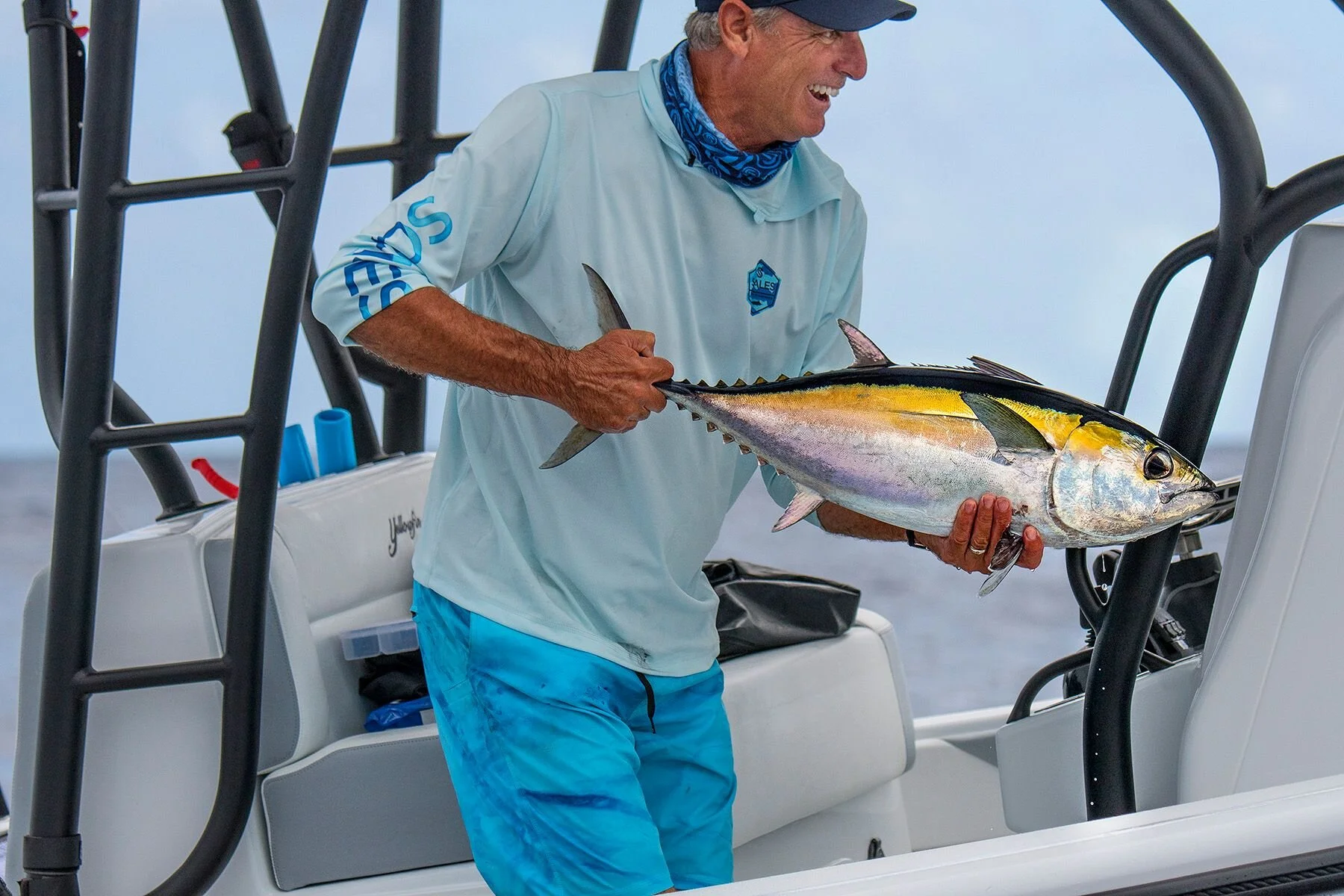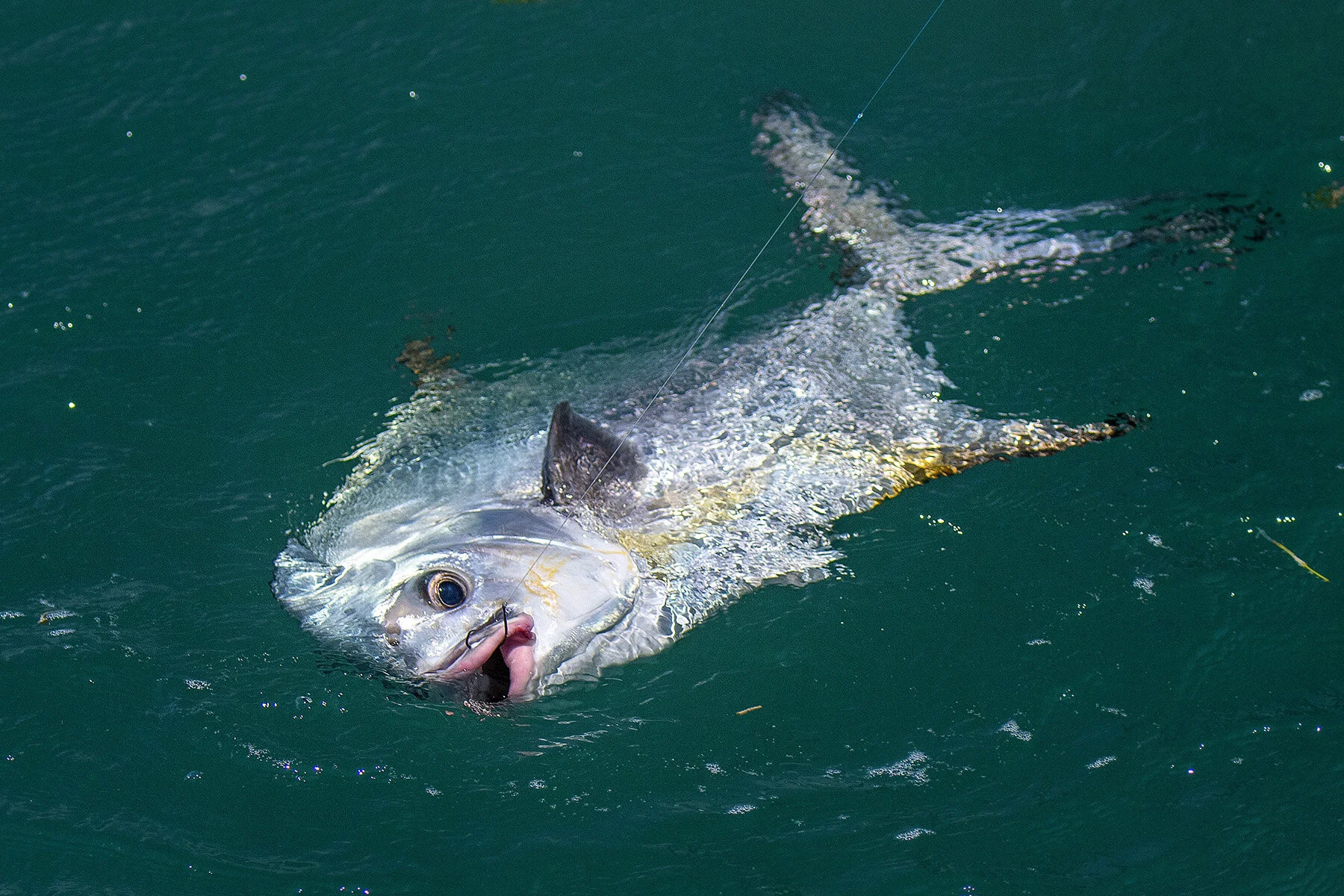How To Catch Blackfin & Yellowfin Tuna
written by staff writer
Veteran Captains Scott Walker and Steve Rodger of Into the Blue have caught countless tuna in their times as Captains and guides. In Episode 2: "The Tuna Difference." they offer tips and techniques for every type of tuna you could be targeting. In this article we will cover two species they discuss in this episode, blackfin and yellowfin.
Tuna aren’t the chicken of the sea—they’re the ninjas. Both blackfin and yellowfin are found in the Florida Keys, usually in locations such as Marathon, Islamorada, and close to the Bahamas. They’re camouflaged with their blue-green tops and silver-white bottoms, and they're fast. In the top ten of fastest fish, blackfin and yellowfin can clock up to 45 mph and put up a worthy fight. Here are some tips these two seasoned guides have picked up to help us all on the water.
Blackfin
“it’s about getting up early and throwing that cast net”
As Walker and Rodger head out cruising with their Mercury Marine engines they target live bait first. Blackfin are smaller and often mistaken for bonita, but blackfin will jump out of the water while bonita don't. “What was your go-to plan when it was time to catch blackfin?” Rodger asks Walker who responds simply, “We need that bait.” Though feathers can be used Walker describes it really takes live bait to get the big blackfin. What they tend to use is pilchards for blackfin or mullet. “The bigger the bait the better,” Walker explains, “even a 30 lb. blackfin can eat a 10 inch live mullet. It’s unbelievable.” he says.
“We call it shrimp boat trash…You can go out there and you can catch pretty much until you’re tired”
However, following behind a shrimp boat might be your best bet. As Rodger describes, “We call it shrimp boat trash… we will take that trash and we’ll trickle it behind the boats because there are so many blackfin tunas and Bonitas following that shrimp boat.” The blackfins will already be in a feeding frenzy and ready to attack anything else nearby. Following behind the boat, you can quickly round up more blackfins in less time, rather than searching for them on your own. “You can go out there and you can catch pretty much until you’re tired.” says Rodger.
Yellowfin
“yellowfin are big, and slower than those other fish...so throw a much larger bait.”
As the boys from Into The Blue head out in their SeaDek decked out Yellowfin to target Yellowfin, they describe the difference in size is how you attack these different tuna. Yellowfin are usually much bigger, with the world record weighing in at a backbreaking 427 lbs. When searching for yellowfin, it’s best to throw something that the other tuna will have a much harder time eating. “Take 50% of players out of play” says Walker, “hopefully 80%.” By using this much larger bait you are hoping to eliminate the majority of small blackfins and bonita who are much quicker and saving up for a hefty yellowfin.
The other way to target these big yellowfin is to resemble a shrimp boat as Rodger describes, “Keep a chumming situation with the dead trash off the side of the boat, resembling a shrimp boat.” This allows the fish to swarm, usually sharks, Bonitas, and blackfin. “The sharks and the Bonitas are the first swarmers, and you have to get past the first swarmers, and it is not as easy as you think.” says Walker. In fact he claims you have to have 50-70 lbs of chum and shrimp trash. Then you will throw in a very large mullet and you will want to have two fishermen, because as Walker and Rodger describe, one could catch a bonita while the other is ready for the big yellowfin.
Enhance your knowledge, and better your fishing with the Simrad Echo Sounder. Scott Walker talks through the 3 new features he uses to land more fish:
1. Minute Marker
2. Color Marker
3. Color Erase.
See how he uses them:
Whether it's the frisky blackfin tuna or the fighting yellowfin, the next time you're targeting tuna you'll be ready for these ninjas of the sea. Whichever technique you choose, remember that this is not the kind of fish that’s going down without a fight. Yellowfin Tuna will exhaust every inch of your and their own strength before they surrender. After all, we wouldn’t have it any other way, would we?
See the full episode of Into The Blue S11:E2 “The Tuna Difference”
So, let’s turn it back to you. Which of these species have you caught? What’s your favorite Tuna to catch? Any tips you’d like to share? Let us know in the comments below!”
















